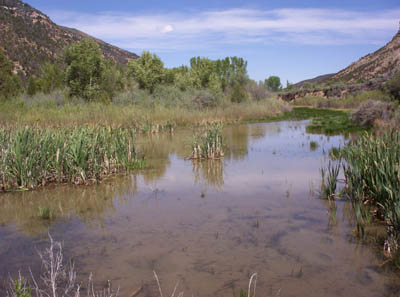Wetlands
Many wetlands and streams are present in the Ute Mountain Ute Tribal lands (UMUTL) are heavily impacted by agriculture, grazing, noxious weeds, and development for homes, gravel and oil & gas extractions. In an arid environment, the wetland and riparian ecosystems are an important and rare resource, and their importance for fish and wildlife, cultural and traditional practice and life style, and recreation cannot be over emphasized.

Native plants associated with riparian and wetland ecosystems have been gathered and utilized by the Ute people as food, shelter, clothing, ceremony, medicine, tools, baskets, dye, and fuel. This way of life is practiced today, and protecting and conserving the habitats for these plants support the traditional practices and culture of the Ute People.
